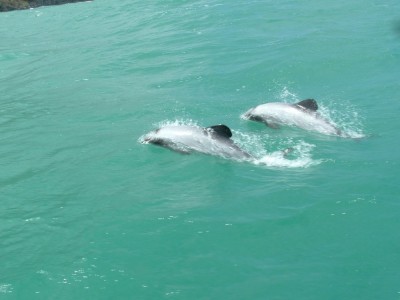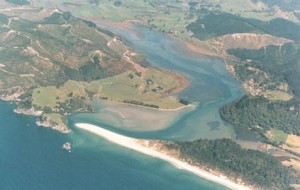The coastline of the Waikato Region covers approximately 1150km and includes the exposed west coast, the Firth of Thames and the Coromandel Peninsula.
Estuaries are among our most sensitive coastal places. Home to a wide range of birds, fish and shellfish they are of enormous environmental and economic importance. There are 35 estuaries in the Waikato Region.
Within estuaries a number of different aquatic ecosystems are recognised:
seagrass beds; mangroves; saltmarshes; sand and mud flats; rocky reefs and shallow open water areas. Seagrass beds and mangroves provide shelter and food for a wide range of coastal and estuarine animals.
Seagrass also binds land sediments and acts as a wave break. Salt marshes are often nurseries for juvenile fish, and are important breeding and feeding areas for birds. Intertidal sand and mud flats are home to marine worms, shellfish and crabs.
These are important food sources for many fish and birds, and they also play a vital function in recycling nutrients.
The inner Firth of Thames is a productive habitat for cockles and pipis, and fish, particularly benthic soft-sediment feeders such as yellowbelly flounder, dab flounder and short finned eel. Snapper and yellow-eyed mullet, pilchard, ahuru and grey mullet are also found within the inner Firth of Thames. Several species of shark feed in the area, most notably rig. In spring the females of several species including rig, hammerhead, bronze whalers and schools of shark utilize the upper Firth of Thames for birthing. Orca are occasional visitors to the shallows and common dolphin, including nursery groups, are observed regularly in the upper Firth. The Firth is also an important feeding ground for whales. Thousands of Arctic nesting shorebirds, including the bar-tailed godwit, lesser or red knot ruddy turnstone, Eastern curlew and sharp-tailed sandpiper use the Firth as a wintering ground.
Sub-tidal environments include rocky reefs with associated macro-algae (seaweed) and fauna, and soft sediment habitats. Maui’s dolphin (less than 150 in the wild) are found only on the west coast of the North Island of New Zealand. Currently there is only one marine reserve within the Waikato Region at Te Whanganui a Hei (Hahei), established in 1992.



